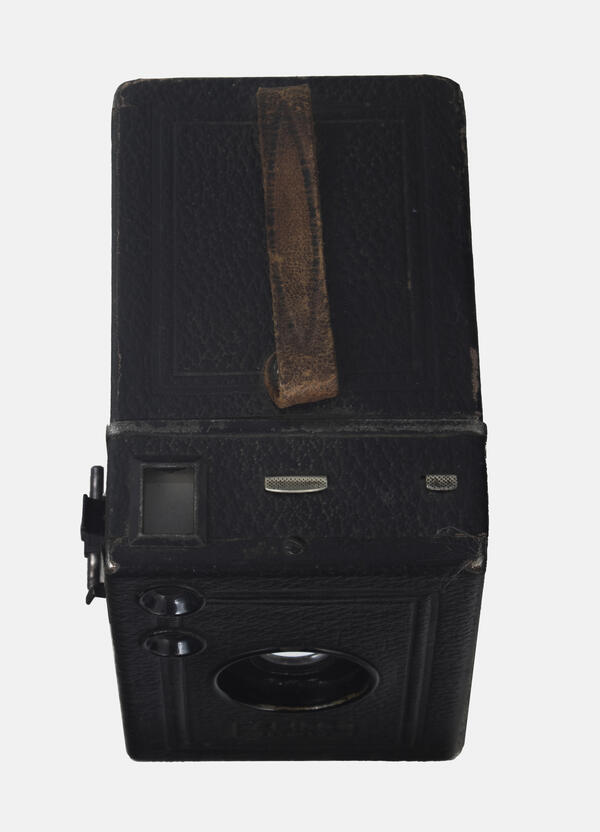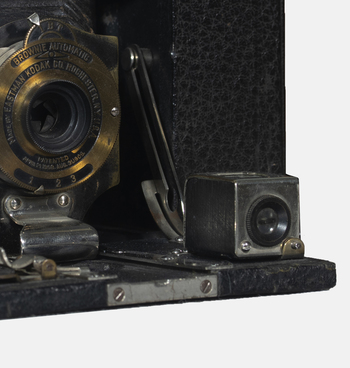The inexpensive Box Tengor camera was produced by the Goerz Company from the early 1920s. The Goerz brand was founded in 1886 by Carl Paul Goerz, a former salesman for the German camera manufacturer Emil Busch AG. Goerz soon established himself as a manufacturer of high-quality lenses, and after only two years his company merged with another German business and became known as Optische Anstalt C.P. Goerz.
Over a short period of time, Goerz developed at least a dozen different types of lenses, from the very basic to the top-of-the-line Goerz Dagor. The Goerz company quickly became successful: in 1914, it had over 3,000 employees and was a major competitor of Carl Zeiss’s firm.
In addition to lenses, Goerz also produced cameras. The mid-range or high-end folding cameras were usually called Tenax, such as the Taro Tenax or the Vest Pocket Tenax. All of them came with various Goerz lenses, including even the best ones in the Dagor line. The simplest cameras were labeled Tengor. This category included box cameras and folding cameras with simple leaf shutters and single or two-element lenses.
In 1924, Hertz produced a simple medium format box camera called the Box Tengor. This camera, made entirely of metal, had a one-speed shutter. In the 1920s, photography was becoming more and more welcoming toward amateur photographers, so simple cameras like the Box Tengor were quite popular on the market.
In 1926, the German branch of Goerz was forced to merge with ICA, Contessa-Nettel and Ernemann to avoid bankruptcy. As a result, the famous Zeiss Ikon association was opened in Dresden. The newly established company produced various modifications of Box Tengor cameras from 1926 to 1956.
The Box Tengor medium format camera came in three
variations, and each model used a different type of film. The camera was a
rectangular leather-covered box with two optical viewfinders — one for
vertical, one for horizontal image format. On the side, there was a film
winding knob and a latch for opening and closing the back cover, and on the
top, there was a film counter window. The camera had a Goerz Frontar DRP lens,
one shutter speed (1/25 s) and three apertures: f/11, f/16 and f/22. The device
was valued for its simple design and reliability.



